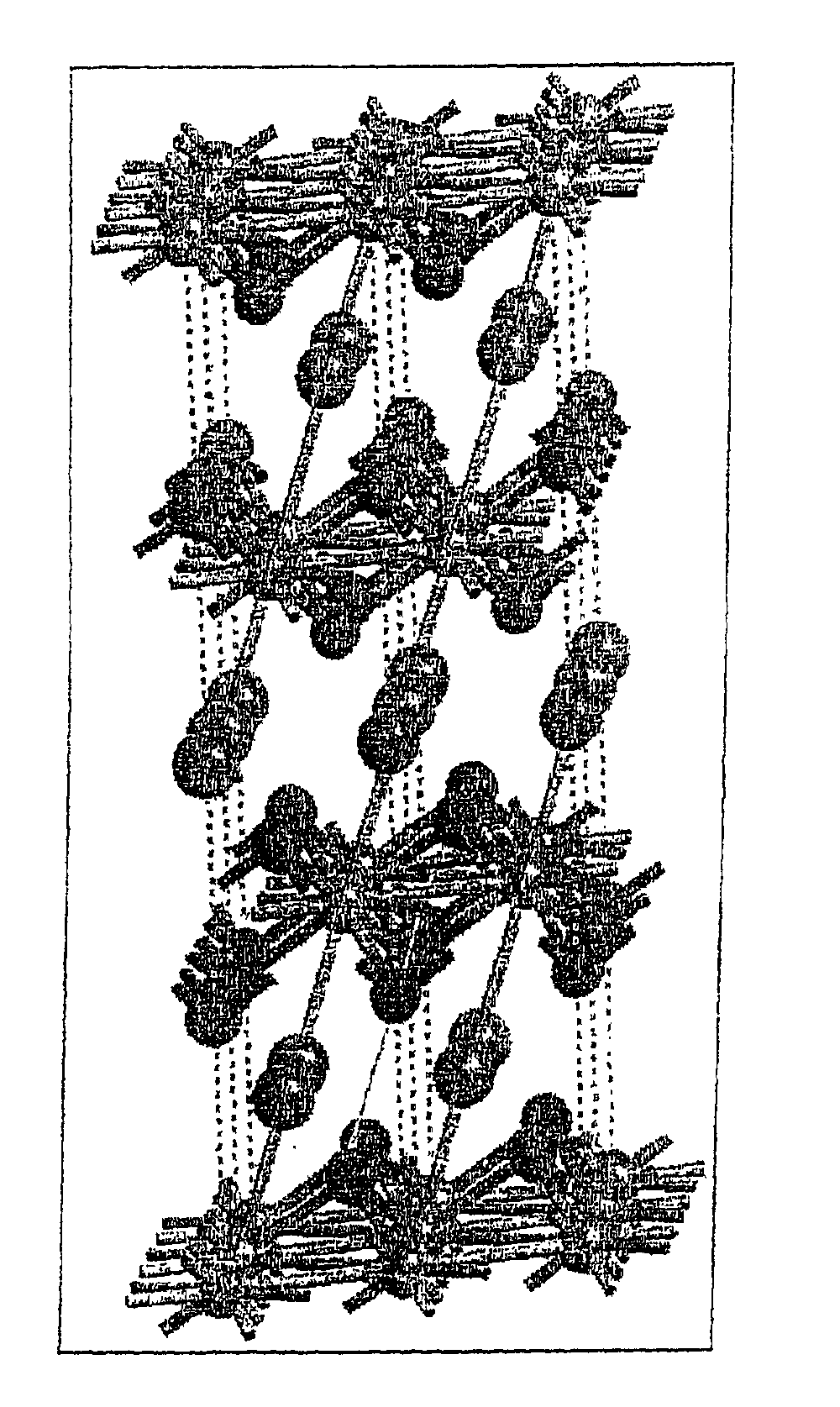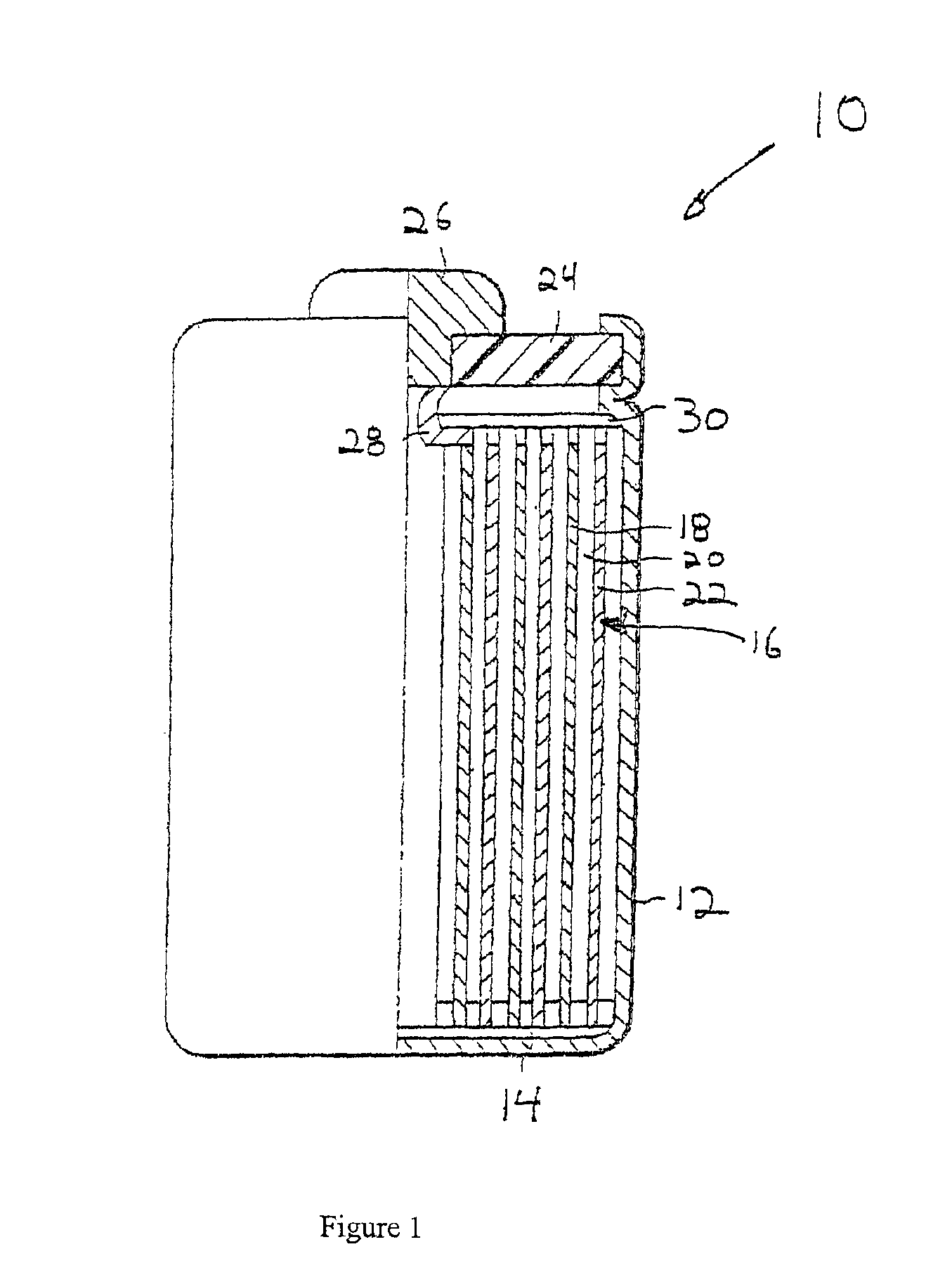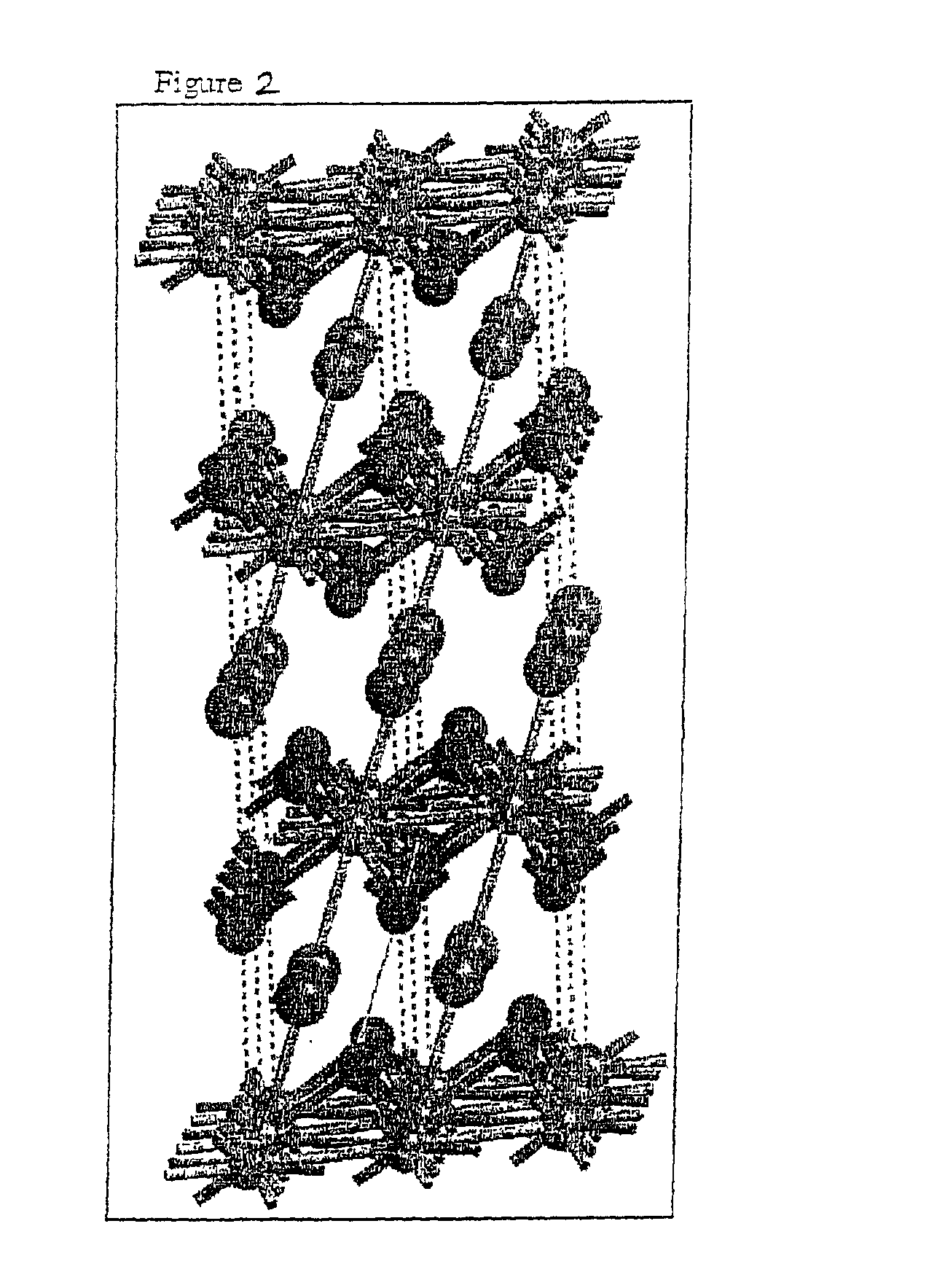Cathode material for lithium rechargeable batteries
- Summary
- Abstract
- Description
- Claims
- Application Information
AI Technical Summary
Benefits of technology
Problems solved by technology
Method used
Image
Examples
example 1
Synthesis of Li1.05Mg0.05Ni0.87Co0.1Mn0.03O2
24.35 g LiNO3, 0.98 g Mg(OH)2, 27.13 g Ni(OH)2, 3.13 g Co(OH)2 and 0.72 g MnO were placed in a Retsch / Brinkmann mortar grinder (model RM100) fitted with agate mortar and pestle and ground for 5 minutes. The resultant homogeneous powder was placed in an alumina combustion tray and sintered in a Degussa-Ney muffle furnace (model 3-1750), under the following profile: ramp 5° C. / minute to 450° C., hold at 450° C. for 4 hours, ramp 2° C. / minute to 750° C., hold at 750° C. for 4 hours. The sample was allowed to cool naturally to room temperature and then ground 5 minutes in the mortar grinder to attain a particle size range of 1-50 μm. When subjected to XRD there were no impurities noted. The lattice parameters were a=2.8744(4) Å and c=14.195(1) Å. Electrochemical measurements of this powder yielded a specific capacity at C / 8 of 163 mAh / g with a 1st cycle efficiency of 84%, and a gassing volume of 6.7 cc / g. This shows that a high capacity is ob...
example 2
Synthesis of LiMg0.01Ni0.87Co0.08Mn0.05O2
73.83 g LiNO3 (excess Lithium was used), 0.59 g Mg(OH)2, 29.69 g Co(OH)2, and 5.86 g MnCO3 were mixed 5 minutes in a Retsch / Brinkmann mortar grinder (model RM100) fitted with an agate mortar and pestle. The mixed materials were added to a 1L high density polyethylene jar containing 82.25 g Ni(OH)2 and mixed by shaking. The homogeneous precursor powders are placed in an alumina crucible, and sintered under air using the following heating profile: ramp 5° C. / minute to 450° C., hold at 450° C. for 4 hours, ramp 2° C. / minute to 775° C., and hold for 24 hours. The sample was then allowed to cool naturally to room temperature and ground for 5 minutes to break up agglomerates. When subjected to XRD this material was shown to be the phase pure rhombohedral structure of α-NaFeO2-type with no detectable impurities.
example 3
Synthesis of LiMg0.03Ni0.87Co0.10Mn0.03O2
74.7 g LiNO3 (excess Lithium was used), 1.77 g Mg(OH)2, 8.13 g Co3O4, and 3.49 g MnCO3 were mixed 5 minutes in a Retsch / Brinkmann mortar grinder (model RM100) fitted with an agate mortar and pestle. The mixed materials were added to a 1L high density polyethylene jar containing 65.79 g NiO and mixed by shaking. The homogeneously mixed precursor powders are placed in an alumina crucible, and sintered under air using the following heating profile: ramp 5° C. / minute to 450° C., hold at 450° C. for 4 hours, ramp 2° C. / minute to 850° C., and hold for 6 hours. The sample was then allowed to cool naturally to room temperature and ground for 5 minutes to break up agglomerates. A second calcination procedure, using the same heating profile as the first calcination, was then applied. When subjected to XRD this material was shown to contain the phase pure rhombohedral structure with no detectable impurities.
PUM
 Login to View More
Login to View More Abstract
Description
Claims
Application Information
 Login to View More
Login to View More - R&D
- Intellectual Property
- Life Sciences
- Materials
- Tech Scout
- Unparalleled Data Quality
- Higher Quality Content
- 60% Fewer Hallucinations
Browse by: Latest US Patents, China's latest patents, Technical Efficacy Thesaurus, Application Domain, Technology Topic, Popular Technical Reports.
© 2025 PatSnap. All rights reserved.Legal|Privacy policy|Modern Slavery Act Transparency Statement|Sitemap|About US| Contact US: help@patsnap.com



